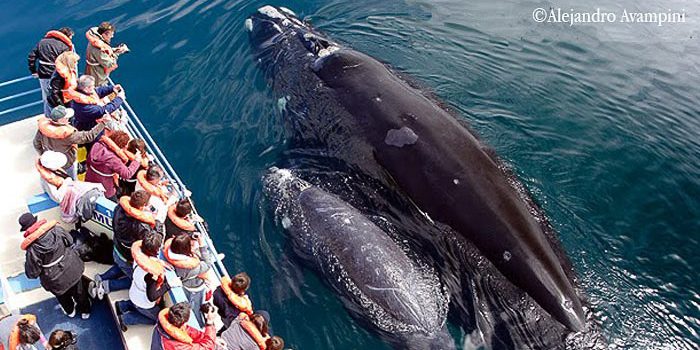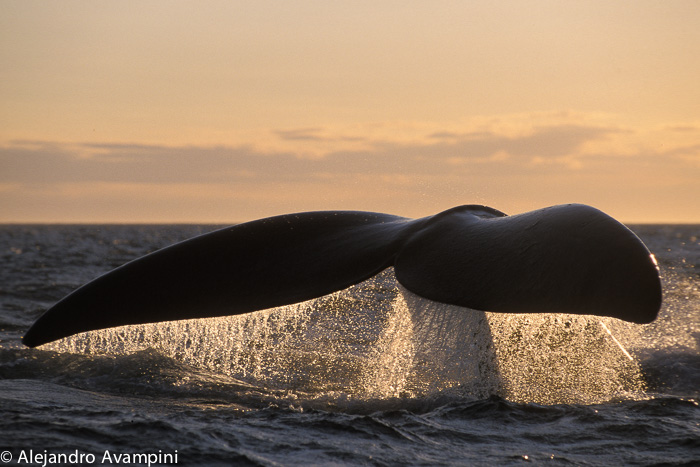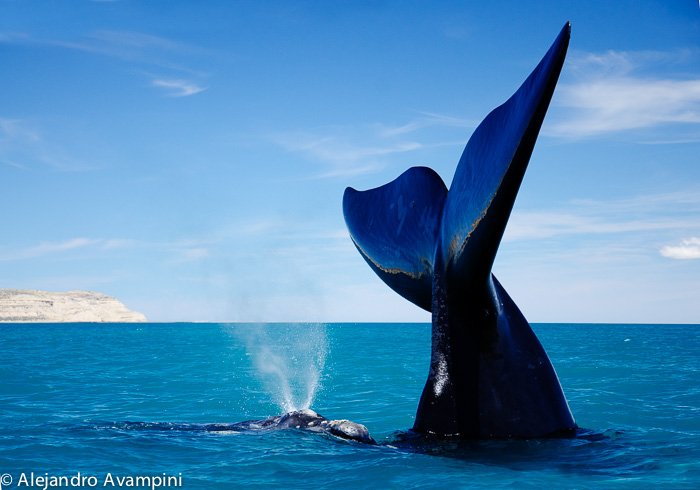The forms that whales have in general are really very different from any other living being and their size cannot be compared to that of our species. But despite being the morphology so different from ours, anatomy brings us closer to this monumental species of being alive.
Humans share a certain kinship from some characteristics with the greatest beings on the planet. We are both mammals, that is, vertebrates, warm-blooded with hairs and mammary glands. According to scientific discoveries, we descend from a common ancestor. dating back to the end of the Triassic, more than 200 million years ago. Knowing this significant family bond allows us to recognize an important affinity with mammals, including marine mammals.
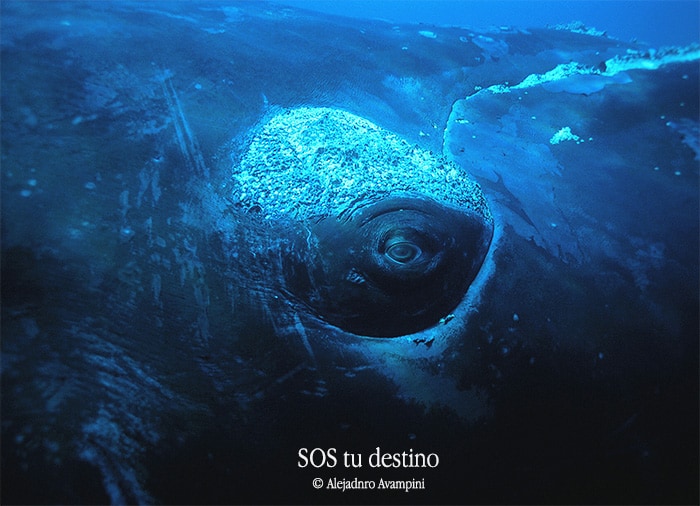
Look of a right whale
Adults reach up to 56 ft ( 17 m ) in length and as in other species of the genus, the females are larger than the males, to be able to breed the young inside their body, after the gestation. These animals can weigh more than 50 tons and as auxiliary data newborns are 16 ft ( 5 m ) long.
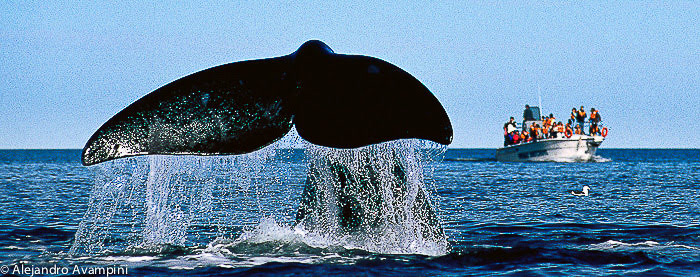
whale watching in Puerto Piramides – Peninsula Valdes
Just by comparing the ratio of the head of the whale that represents a third of its entire body and that of the human of just one eighth, it is easy to understand that the difference between species is tremendous. The vast majority of marine animals focus their perception of a world that rests horizontally in a cold, watery environment, and the head is the first thing that advances when propelled with the tail.
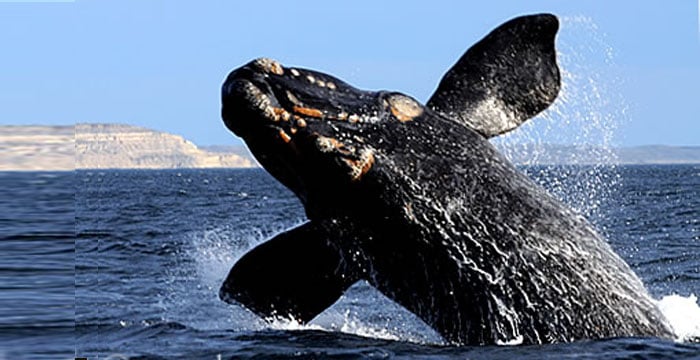
Southern right whale baby jump in Puerto Piramides Bay
Smooth and elastic skin of dark coloration, wraps around your body, in whale calves, it is usually clearer than that of adults and examples are quite common with white spots on the belly and occasionally on the back. Under the skin, which constantly renews, they have a thick layer of fat, with a thickness of between 5.5 in ( 14 cm ) and 13in ( 35 cm ) that varies according to the area of the body and the season of the year.
The line of the mouth is strongly inclined and the face is arched, it is very narrow when seen from above. In the right whales, there is no trace of the dorsal fin as with the blue whale or the humpback whale. His back is smooth and wide. The fins are large and up to 5.6 ft ( 1.7 m ) long, the tail fin can measure 4 meters in span.

Southern right whale baby jump in Puerto Piramides Bay






